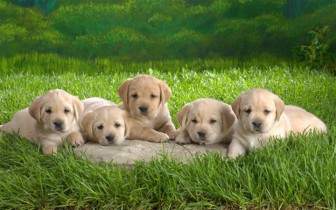Continued
Today, we will continue making some more general remarks on this matter of breeding companion animals. Although it is more directed to so-called breeders who actually mate dogs to make dollars, the advice contained in today’s column is valid for the family that wishes to experience the process of reproduction and birth. The fact that some beautiful puppies can emerge from a sensible mating regime is a meaningful bonus. Also, I might add that prospective puppy owners should not, in this ‘hard guava season,’ throw away their hard earned dollars in acquiring ‘pashuma” puppies with all sorts of inherent and overtly visible deficiencies.
 Breeding is subject to the chance combination of countless genes. The smallest combination of genes which can determine a heredity trait is a pair. One gene is inherited from each parent. When two genes combine, the dominant gene is the one that determines the trait. A recessive gene does not determine a trait unless it is combined with another recessive gene. Other combinations may be additive – that is, both genes contribute in part to the expression of the trait. Unfortunately, most traits that breeders are interested in are determined by a great many genetic pairs – which is why dog breeding is an art, based on experience and educated guesses, and not an exact science. Since a dog has 39 pairs of chromosomes and each chromosome contains more than 25,000 genes, the genetic possibilities are almost infinite.
Breeding is subject to the chance combination of countless genes. The smallest combination of genes which can determine a heredity trait is a pair. One gene is inherited from each parent. When two genes combine, the dominant gene is the one that determines the trait. A recessive gene does not determine a trait unless it is combined with another recessive gene. Other combinations may be additive – that is, both genes contribute in part to the expression of the trait. Unfortunately, most traits that breeders are interested in are determined by a great many genetic pairs – which is why dog breeding is an art, based on experience and educated guesses, and not an exact science. Since a dog has 39 pairs of chromosomes and each chromosome contains more than 25,000 genes, the genetic possibilities are almost infinite.
Many undesirable heredity traits are expressed by recessive genes. Such a gene can be carried down through many generations of offspring, causing no problem until it is combined with a like recessive gene. This is why recessive traits cannot be eliminated in one or two generations of careful breeding.
In contrast, dominant traits are seen in the first generation of puppies. Breeders easily recognize problems caused by dominant genes. By choosing not to breed such individuals they eliminate those traits from their breeding programme.
 For these reasons, sporadic hereditary disorders are more frequently due to recessive genes.
For these reasons, sporadic hereditary disorders are more frequently due to recessive genes.
Undesirable hereditary traits commonly seen by dog owners are undescended testicles; inguinal and navel hernia; abnormally short or absent tails; canine hip dysplasia and elbow dysplasia; malocclusion of the jaws (incorrect bite); cleft palate and harelip; slipping kneecaps; congenital cataracts; congenital deafness; entropion and ectropion; progressive retinal atrophy; extra toes; and behaviour disorders such as inherited aggression and shyness. And so many more.
When you breed two dogs with a common ancestor, their litter inherits some of the same genes from each side of the pedigree (ie from the mother and the father). This allows for the statistical possibility that genes will ‘double-up’ at the same locus. The result is two-fold: first the expression of traits is more uniform; but undesirable recessive genes may come to the surface, thereby giving rise to serious problems.
Most of the above text has been taken from a handbook authored by Drs Carlson and Griffin. Of all the reference texts on this subject matter, the writings of these two gentlemen made the complex topic a bit more understandable.
We have kept it short today because the subject matter is a bit complicated and perhaps a wee bit scientific. We hope that you can digest most of the substance. If not, feel free to call us for more (or specific) information.
Please implement disease preventative measures (vaccinations, routine dewormings, monthly anti-heartworm medication, etc) and adopt-a-pet from the GSPCA’s Animal Clinic and Shelter at Robb Street and Orange Walk, if you have the wherewithal to care well for the animals. Do not stray your unwanted pets, take them to the GSPCA’s Clinic and Shelter instead. If you do not wish your pet to have puppies or kittens, you may exploit the GSPCA’s free spay and neutering programme. If you see anyone being cruel to an animal, or if you need any technical information, please get in touch with the Clinic and Shelter by calling 226-4237.






